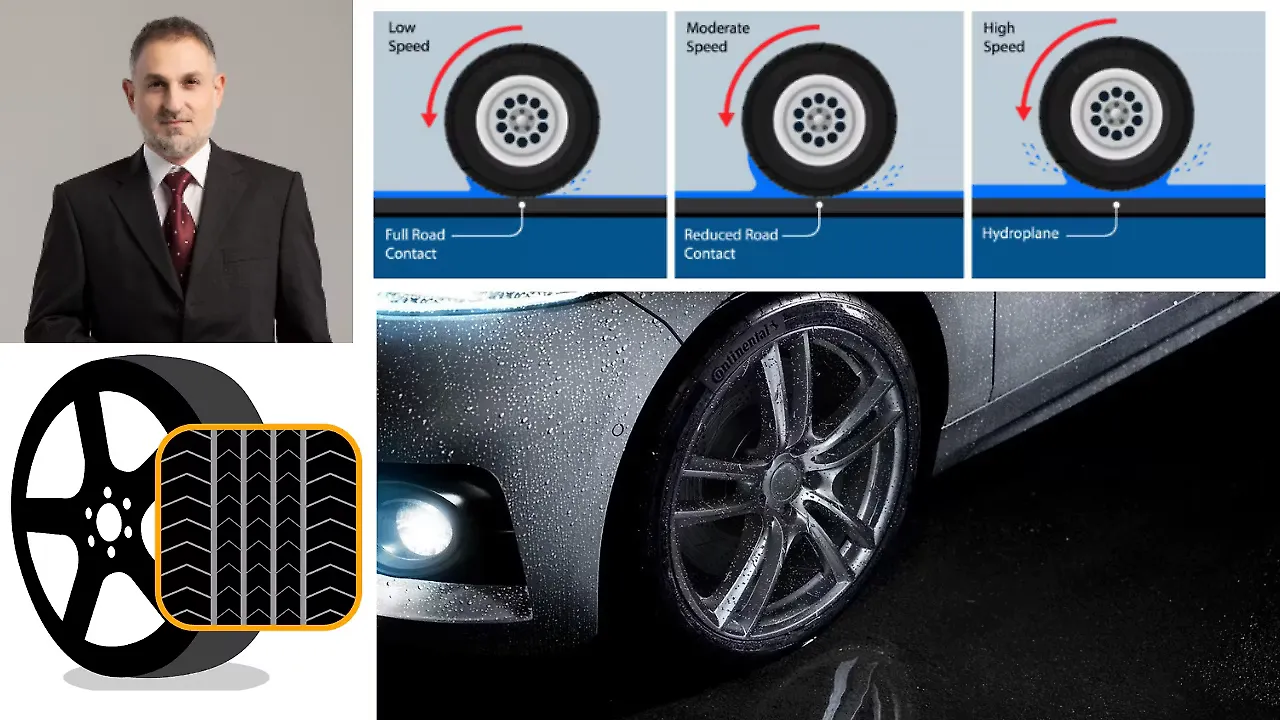
With the monsoon season intensifying, navigating roads becomes increasingly challenging for both four-wheelers and two-wheelers due to slick surfaces and reduced visibility. Despite these hazards, travel remains undeterred.
According to a 2023 report by the Ministry of Road Transport and Highways (MoRTH), over 70,000 accidents occurred during the monsoon months of July and August in 2022 in India. Wet weather diminishes a driver’s visibility and reduces tyre friction on the road, significantly increasing the risk of accidents.
Tolga Mutlu, Head of Product Management Asia Pacific at Continental Tires stressed the importance of maintaining tyres in optimal condition for wet weather driving and offers practical tips to stay safe on the roads.
Understanding Aquaplaning/Hydroplaning
Aquaplaning, also known as hydroplaning, occurs when car tyres lose contact with the surface of wet roads, leaving the driver unable to brake or steer. This phenomenon is particularly dangerous after the first rain shower following a dry spell, as it mixes with oil and debris on the road to create an exceptionally slick surface.
Several factors contribute to aquaplaning: driving speed, tyre type, tyre condition, and road condition. However, drivers can take steps to control their vehicle's performance in wet weather.
To minimise the risk of aquaplaning, it is crucial to maintain proper tyre performance. Tyre treads are designed to expel water and ensure that the tyres maintain contact with the road, providing necessary grip and traction. Before the rainy season, motorists should check that their tyres meet the recommended tread depth and are inflated to the optimal pressure. Combined with cautious driving habits, these measures can help ensure a safer, more stable driving experience during wet weather.
Reducing speed in wet conditions and maintaining tyres in excellent condition will provide the safest driving experience for you and your loved ones. Regularly checking tyre treads and pressure is a good practice to ensure that your vehicle is ready for the challenges of the rainy season.

Practical Tips
Mutlu has shared some tips for safe driving in wet weather conditions. He advises braking carefully and maintaining control by looking as far ahead on the road as possible and slowing down by easing off the accelerator instead of hitting the brakes. In wet weather, brakes do not respond as quickly as in dry conditions, and sudden braking can cause the vehicle to skid. Additionally, it's better to avoid using cruise control to ensure full control of the vehicle.
The second suggestion he gave is to increase following distance i.e. maintain more space between your vehicle and others. It takes about three times longer to brake on wet roads compared to dry roads. Avoid tailgating and keep more than two car lengths between you and the vehicle ahead. This also helps reduce the spray from other vehicles, improving visibility. Besides, keeping headlights and ensuring that the brake lights are functional will help improve visibility.
Checking tyre pressure is key as optimal tyre pressure will maximise grip, which is crucial for safety on wet roads. The correct tyre pressure is specified by the vehicle manufacturer and can be found on the vehicle door edge, not on the side of the tyre, which indicates the maximum pressure, he explained.
Inspecting tyre tread to ensure if the tread depth is sufficient. New tyres can disperse up to 30 litres of water per second at 80 kilometres per hour. If tyres have a tread depth of 3mm, they retain a high amount of water displacement capability. Worn treads significantly increase the risk of skidding and affect braking performance, he warned.
Mutlu suggest to opt for tyres specifically designed for wet roads. These tyres feature unique tread patterns and advanced rubber compounds that efficiently disperse water and maintain contact with the road. Wet weather tyres typically have zigzag sipes that quickly channel water from the tyre grooves, resulting in superior wet braking performance and safer stopping in slippery conditions.
By following these tips, the vehicle user can ensure a safer driving experience during wet weather, keeping the user and the co-passengers safe and secure, he concluded.
Also Read: